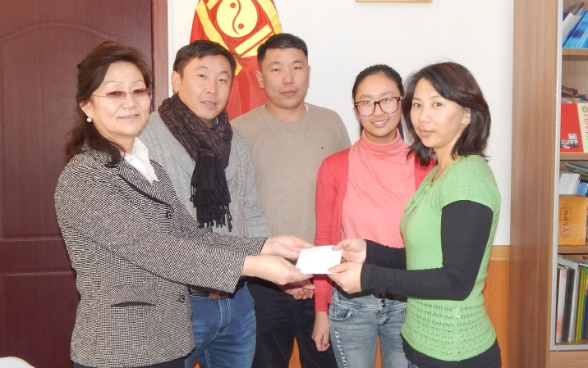
Tov, Mongolia– After graduating from university in Mongolia’s capital Ulaanbaatar, D. Bertsetseg returned to her hometown of Zuunmod soum, Tov aimag where she worked in education for 30 years. “I came back to my hometown to educate the future of Zuunmod–its school students,” Bertsetseg explains. Zuunmod soum is comprised of more than 4,600 households, with a population of 16,000 inhabitants.
Bertsetseg was drawn into politics during Mongolia’s democratic transition in the 1990s. After working as an election campaign manager and being twice nominated herself, she was eventually elected into the soum’s Citizen Representative Hural in 2012.
Following her appointment, Bertsetseg took part in a National Training Programme, as part of the Capacity Strengthening of Local Self-Governing Bodies Project implemented by UNDP and funded by the Swiss Agency for Development and Cooperation, for all khural representatives. The tailored training includes topics such as citizen participation in decision-making, public financial management, ethics, green development, human rights, and gender.
Bertsetseg also participated in the country’s first nationwide Women’s Leadership Training organized by the Project. “The Training affected us women in a very positive way since there are 14 women representatives in Zuunmod soum hural,” said Bertsetseg.
The Training will reach all women representatives in Mongolia and its curriculum includes leadership, power dynamics, and human rights.
“I hope the Trainings' impact will continue to empower women representatives. Women are the backbone of the family and the bedrock of a community. With more women in power, I believe we would have more harmony, more engagement, less suffering, and less conflict.”
For Bertsetseg, a khural representative means, “Being a responsible leader, ensuring a better future for the community, while also voicing people’s needs when shaping local policies.”
By: Philippe Long

